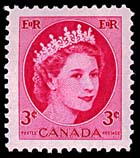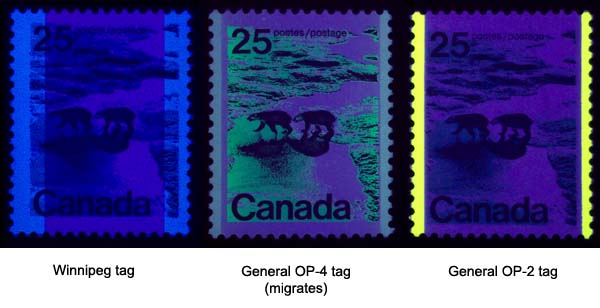Study Notes
Checklists
Karsh/Wilding/Cameo:
![]() Karsh
Karsh
![]() Wilding
Wilding
![]() Cameo
Cameo
Centennial:
![]() Centennial
Centennial
Caricature & Landscape:
![]() Caricature
Caricature
![]() Landscape
Landscape
![]() Cityscapes
Cityscapes
Environment:
![]() Flowers
Flowers
![]() Trees
Trees
![]() Street Scenes
Street Scenes
![]() National Parks
National Parks
![]() QE II
QE II
![]() Parliament
Parliament
![]() Maple Leaf
Maple Leaf
Artifact & Parliament:
![]() Low-value
Low-value
![]() Medium-value
Medium-value
![]() Parliament (bklt/coil)
Parliament (bklt/coil)
![]() Parliament (1st class)
Parliament (1st class)
Mammals & Architecture:
![]() Low-value
Low-value
![]() Medium-value
Medium-value
![]() Architecture
Architecture
![]() QE II
QE II
Berries,
Fruit & Flag:
![]() Low-value
Low-value
![]() Medium-value
Medium-value
![]() Flag (first class)
Flag (first class)
![]() Flag (vending bklt)
Flag (vending bklt)
![]() Flag (self-adhesive)
Flag (self-adhesive)
![]() Flag (coil)
Flag (coil)
Trade, Leaf & Wildlife:
![]() Low-value Trades
Low-value Trades
![]() Medium-value Trades
Medium-value Trades
![]() 1st class/Medium-value Maple Leaf
1st class/Medium-value Maple Leaf
![]() 1st class Leaf Coil
1st class Leaf Coil
![]() Medium-value Wildlife
Medium-value Wildlife
![]() High-value Wildlife
High-value Wildlife
Insect, Flag, Leaf & Flower:
![]() Insects 2007-
Insects 2007-
![]() Flag (vert) 2004-
Flag (vert) 2004-
![]() Maple Leaf 2003-2004
Maple Leaf 2003-2004
![]() Flowers
Flowers
Other
Updated Jan 21/99
 Phosphor tagging was introduced to Canadian stamps during the Wilding definitives (January 13, 1962). In 1972, a new style of tagging began to appear on Canadian stamps: "general" tagging (OP-4 and OP-2).
Phosphor tagging was introduced to Canadian stamps during the Wilding definitives (January 13, 1962). In 1972, a new style of tagging began to appear on Canadian stamps: "general" tagging (OP-4 and OP-2).
Winnipeg tagging
OP-4 tag
OP-2 tag
A new, modern (at that time) post office was built in Winnipeg, Manitoba in the early 1960's that included the installation of automatic letter facing, sorting, and cancelling equipment.
The machinery (a "Segregator Mark 1" and four "Automatic Letter Facers Mark 1") was installed late in 1962 and commenced operation March 13, 1963. This equipment operates on the basis of a phosphorescent "tag" recognition system. Stamps were issued with phosphorescent bars applied vertically - one 4mm vertical bar down the center of the 4c Wilding and one 8mm vertical bar down the perforations of the 1c, 2c, 3c, and 5c Wilding values.
The tagging has been dubbed "Winnipeg tag" due to the city where it was used. These "Winipeg tagged" stamps can be identified with the aid of an ultraviolet light. Phosphorescent materials were selected over fluorescent pigments because fluorescent materials are frequently added to paper (i.e. envelopes) to increase whiteness.
The phosphor (Winnipeg tagging) reacts to ultraviolet light and will leave an afterglow (albeit very brief) when the ultraviolet light source is removed. You may find that some tagged stamps can be spotted with the naked eye (i.e. without the use of an ultraviolet light), particularly on the Cameo definitives - many of these appear as a "yellowish" coating on the left and right edges of the stamps where the tagging was applied.
It may be difficult to identify the Winnipeg tagging on stamps that are highly fluorescent (or even hi-brite) - in these cases, use the "after-flow" method, noted above.

"General" tagging began to replace the Winnipeg tagging in 1972. It is sometimes been referred to as "Ottawa" tagging. This tagging has no afterglow associated with it.
The first general tagging is called "OP-4", its technical term, and one that has been used more frequently in recent years. OP-4 tagging has a brilliant yellow colour, faintly tinged with green. Another distinguishing feature is that it "migrates" - the tagging material will bleed across the stamp, and onto other stamps and materials that are in contact with the tagging for prolonged periods. OP-4 tagging was superseded by OP-2 tagging in 1972.
Some stamps in the Centennial definitives and medium-value Landscape definitives exist with both OP-4 and OP-2 taggings.
OP-2 tagging was an improved "version" of "General/Ottawa" tagging. It does not migrate as does OP-4 tagging.
In its early stages in the Centennial definitive-era, OP-2 tagging shows widely different shades, from a full, rather deep, yellow, to light yellow, to cream and to ivory. It does not show the brilliance of OP-4, nor does it show the greenish tinge.
During the Centennial and Landscape eras, the edges of OP-2 bars appear straight and clean-cut, whereas the edges of OP-4 tag bars are blurred (due to the migration into the adjacent paper of the stamp).
During the Landscape era, 2 different widths of tag bars were used - this is an important criteria for identifying different printings.
During the Environment definitive era, the edge of the tag bars will be either straight and clean (on stamps printed by lithography), or appear very blotchy (on stamps printed by photogravure).
All stamps issued after 1972 (that were issued with tagging, that is) used OP-2 tagging. As such, they are simply referred to as "general tagged stamps".
Until the Artifact definitives, all tagging was applied in vertical bars down the perforations. "Block" tagging appeared on the 10c Artifact in March 1985. This tagging was applied on both the horizontal and vertical perforations, creating a "frame" around the stamp.

© 1999-2013, 2014 Robin Harris
Adminware is a trademark of Adminware Corporation.
